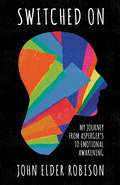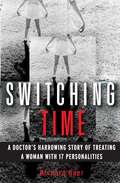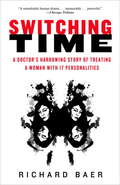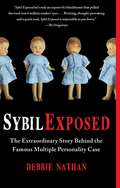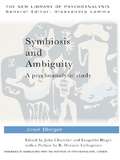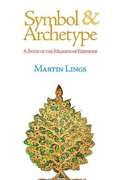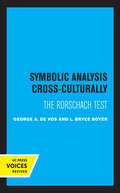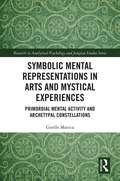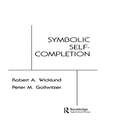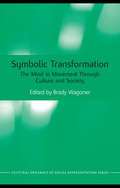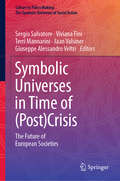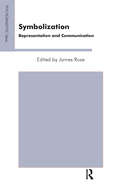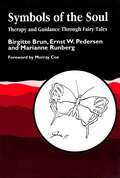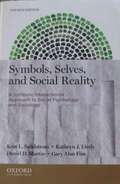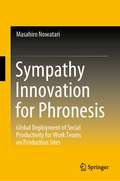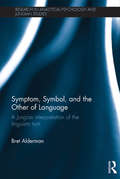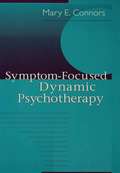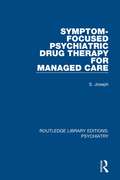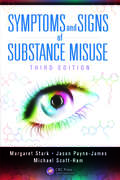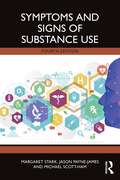- Table View
- List View
Switched On: From Asperger's to Emotional Awakening
by John Elder Robison"For the first time in my life, I learned what it was really like to truly "know" other people's feelings. At a stroke I went from oblivious to insightful, and my life was forever changed. It was as if I'd been experiencing the world in black and white all my life, and suddenly I could see everything - and particularly other people - in brilliant beautiful color."Six years ago, John Elder Robison published Look Me In the Eye, his memoir about growing up with Asperger's. Now he tells the remarkable story of how he met Dr Alvaro Pascual-Leone, a Harvard neuroscientist who proposed that John's emotional intelligence wasn't so much absent as it was dormant, and that by animating the appropriate neural pathways with powerful electromagnets he might be able to awaken this part of his brain. So began a five-and-a-half year journey in which John gave himself up as a guinea pig to some of the world's top brain researchers in an effort to understand and fix the deficits of emotional intelligence that lie at the heart of autism.John experiences the benefits and pitfalls, the joy and melancholy, of being able to feel in response to things that happen to him and his loved ones. A real-life Flowers For Algernon with a happy ending, Switched On goes on the trail of the revolutionary science that has the potential to transform millions of emotionally circumscribed lives.
Switching Time: A Doctor's Harrowing Story of Treating a Woman with 17 Personalities
by Richard K. BaerIn 1989, Karen Overhill walks into psychiatrist Richard Baer's office complaining of vague physical pains and depression. Odder still, she reveals that she's suffering from a persistent memory problem. Routinely, she "loses" parts of her day, finding herself in places she doesn't remember going to or being told about conversations she doesn't remember having. Her problems are so pervasive that she often feels like an impersonator in her own life; she doesn't recognize the people who call themselves her friends, and she can't even remember being intimate with her own husband. Baer recognizes that Karen is on the verge of suicide and, while trying various medications to keep her alive, attempts to discover the root cause of her strange complaints. It's the work of months, and then years, to gain Karen's trust and learn the true extent of the trauma buried in her past. What she eventually reveals is nearly beyond belief, a narrative of a childhood spent grappling with unimaginable horror. How has Karen survived with even a tenuous grasp on sanity? Under hypnosis, alternate Karen personalities reveal themselves in shocking variety and with undeniable traits - both physical and psychological. One "alter" is a young boy filled with frightening aggression; another an adult male who considers himself Karen's protector; and a third a sassy flirt who seeks dominance over the others. It's only by compartmentalizing her pain, guilt, and fear in this fashion-by "switching time" with alternate selves as the situation warrants - that Karen has been able to function since childhood. Realizing that his patient represents an extreme case of multiple personality disorder, Baer faces the daunting task of creating a therapy that will make Karen whole again. Somehow, in fact, he must gain the trust of each of Karen's seventeen "alters" and convince them of the necessity of their own annihilation. As powerful as Sybil or The Three Faces of Eve, Switching Time is the first complete account of such therapy to be told from the perspective of the treating physician, a devoted healer who worked selflessly for decades so that Karen could one day live as a single human being. This book includes grim and disturbing, though not grisly descriptions of child abuse. It also contains language that is objectionable to many people.
Switching Time: A Doctor's Harrowing Story of Treating a Woman with 17 Personalities (Playaway Adult Nonfiction Ser.)
by Richard K. BaerBaer, now medical director for the nation's largest Medicare contractor, had a psychiatry practice for 14 years. He offers a complete account of his 18 year odyssey with Karen Overhill, a seemingly normal wife and mother who came to him for depression and eventually revealed 17 separate personalities. A classic case of multiple personality disorder (MPD), Karen survived a childhood of unimaginable horror and was only able to maintain even a tenuous grasp on sanity with the help of 16 alters who lived inside her--men, women, and children, each frozen at a certain age and stage in Karen's development. Baer draws on 622 pages of progress notes, videos and audiotapes of sessions, and Karen's journal entries and letters to describe their journey into the human psyche. B&w letters and drawings are included, along with an epilogue by Karen herself. Annotation ©2007 Book News, Inc. , Portland, OR (booknews. com)
Sybil Exposed: The Extraordinary Story Behind the Famous Multiple Personality Case
by Debbie NathanNow available in paperback, Sybil Exposed is the New York Times bestselling book that offers a new perspective on the smash hit book and film, Sybil, and on multiple personality disorder itself. Sybil: a name that resonates with legions of obsessed fans who followed the nonfiction blockbuster from 1973. The book rocketed multiple personality disorder into public consciousness and played a major role in having the diagnosis added to the psychiatric bible, Diagnostic and Statistical Manual of Mental Disorders. But what do we really know about how Sybil came to be? In her news-breaking book Sybil Exposed, journalist Debbie Nathan gives proof that the allegedly true story outlined in the megabestseller was largely fabricated. The actual identity of Sybil (Shirley Mason) has been available for some years, as has the idea that the book might have been exaggerated. But Nathan reveals the trio of women behind the legend: the willing patient, her ambitious shrink, and the imaginative journalist who spun their story into bestseller gold. Sybil Exposed draws from an enormous trail of papers, records, photos, and tapes to unearth the lives and passions of these three women whose story exploded into an epic movement with consequences beyond their wildest dreams. Set across the twentieth century and rooted in a time when few professional roles were available to women, this is a story of corrosive sexism, bold but unchecked ambition, runaway greed, utter human vulnerability, duplicity and shared delusion, shaky theories of psychoanalysis exuberantly and drastically practiced, and how one modest young woman’s life turned psychiatry on its head and radically changed the course of therapy—and our culture, as well.
Symbiosis and Ambiguity: A Psychoanalytic Study (The New Library of Psychoanalysis)
by José BlegerSymbiosis and Ambiguity is the first English edition of the classic study of early object relations by influential Argentinian psychoanalyst José Bleger (1922-1972). It is rooted in Kleinian thinking and rich in clinical material. Bleger's thesis is that starting from primitive undifferentiation, prior to the paranoid-schizoid position described by Klein, autism and symbiosis co-exist as narcissistic relations in a syncretic ‘agglutinated’ nucleus. In symbiosis part of the mind is deposited in an external person or situation; in autism it is deposited in the patient's own mind or body. The nucleus is ambiguous and persists in adults as the psychotic part of the personality. Symbiosis tends to immobilise the analytic process, so the analyst must mobilise, fragment and discriminate the agglutinated nucleus, whose ambiguity tends to ‘blunt’ persecutory situations. The psychoanalytic setting functions as a silent refuge for the psychotic part of the personality, where it creates a ‘phantom world’. At some point, therefore, the setting itself has to be analysed and the analytic relationship de-symbiotised, as Bleger observes in a celebrated chapter on the setting. José Bleger’s work demonstrates the need to analyse early narcissistic object relations as they arise clinically, especially in the setting. More widely, he regards undifferentiation and participation as operating throughout life: in groups, institutions, and society as a whole.
Symbol Formation
by H. Werner B. KaplanFirst published in 1984. The authors’ basic aim in this volume has been to set forth a certain perspective on psychological phenomena and to show how this perspective enables one to order and integrate data on symbolization and language behavior—data obtained by a variety of methods and garnered from domains that are too often treated in isolation from each other.
Symbol Use and Symbolic Representation: Developmental and Comparative Perspectives (Emory Cognition Project)
by Laura L. NamySymbol Use and Symbolic Representation: Developmental and Comparative Perspectives is the proceedings of a workshop held at Emory University in 2002 to discuss the difficult and age-old issue of what makes a symbol symbolic. The issue shifts towards exploring the relation between apparent symbolic behavior and actual symbolic insight on the part of the user or recipient.The workshop discussed the pitfalls of inferring symbolic understanding from apparently symbolic behaviors and possible criteria that would enable us to ascertain when a symbol is being employed in an intentional, communicative, representational manner. Broken down into three parts, this volume:*focuses on the factors that influence the emergence of symbolic behavior in young, typically developing children;*turns to an examination of individual and population differences in symbolic development and the ways variability in symbol use can inform the cognitive mechanisms underlying symbolic insight; and*explores symbolic understanding in non-human animals. The text ends with a synthesis of recurring themes, questions, concerns, and conclusions, and offers a new perspective on the process of understanding the relation between symbol use and symbolic insight.
Symbol and Archetype: A Study of the Meaning of Existence
by Martin LingsEvery religious tradition or metaphysical worldview involves a system of powerful symbols, most of which bear common meanings across cultures, continents, and time. This volume, complete with a 9th century Quranic manuscript, explores the significance of the most recurrent symbols and archetypes in human history and elaborates a compelling theory for why symbolism plays such an essential role in human life. The work explores certain basic aspects of symbolism in relation to the Divinity, the hierarchy of the universe, the function of human faculties and qualities, the human condition, natural objects, works of art, and the final end--all with reference to the great living religions of the world, and in particular to Christianity and Islam.
Symbolic Analysis Cross-Culturally: The Rorschach Test
by L. Bryce Boyer George A. De VosThis title is part of UC Press's Voices Revived program, which commemorates University of California Press’s mission to seek out and cultivate the brightest minds and give them voice, reach, and impact. Drawing on a backlist dating to 1893, Voices Revived makes high-quality, peer-reviewed scholarship accessible once again using print-on-demand technology. This title was originally published in 1989.
Symbolic Mental Representations in Arts and Mystical Experiences: Primordial Mental Activity and Archetypal Constellations (Research in Analytical Psychology and Jungian Studies)
by Giselle ManicaSymbolic Mental Representations in Arts and Mystical Experiences explains how the individual’s conceptualization of reality is dependent on the development of their brain, body structure, and the experiences that are physiologically confronted, acted, or observed via learning and/or simulation, occurring in family or community settings. The book offers support for Jean Knox’s reinterpretation of Jung's archetypal hypothesis, exposing the fundamentality of the body – in its neurophysiological development, bodily-felt sensations, non-verbal interactions, affects, emotions, and actions – in the process of meaning-making. Using information from disciplines such as Affective Neuroscience, Embodied Cognition, Attachment Theory, and Cognitive Linguistics, it clarifies how the most refined experiences of symbolic imagination are rooted in somatopsychic patterns. This book will be of great interest for academics and researchers in the fields of Analytical Psychology, Affective Neuroscience, Linguistics, Anthropology of Consciousness, Art-therapy, and Mystical Experiences, as well as Jungian and post-Jungian scholars, philosophers, and teachers.
Symbolic Self Completion
by R. A. Wicklund P. M. GollwitzerFirst published in 1982. Routledge is an imprint of Taylor & Francis, an informa company.
Symbolic Transformation: The Mind in Movement Through Culture and Society (Cultural Dynamics of Social Representation)
by Brady WagonerThis book brings together scholars from around the world to address the question of how culture and mind are related through symbols: it is through the mediation of symbols that we think, act, imagine, feel, dream and remember. Thus, to understand the structure, function and development of symbols is to understand what it means to be human. Part I of the book constructs a theoretical foundation in semiotics for thinking about symbols, and analyzes their place in speech, images, affect and evolution. Part II explores how our experience is transformed through symbols: why we are moved by a movie or political speech, how bread and wine can taste like Christ’s body and blood, and why our memories are forever changing. Part III focuses on symbols in the human life-course, particularly in connection with play, language and art. And lastly, Part IV explores how identities, such as being a sex-worker or HIV-positive, are constituted in social relationships through society’s symbols. This broad interdisciplinary synthesis on the problem of symbols is an essential resource for anyone studying culture in mind, including advanced students in psychology, semiotics, anthropology, communications and philosophy.
Symbolic Universes in Time of: The Future of European Societies (Culture in Policy Making: The Symbolic Universes of Social Action)
by Jaan Valsiner Sergio Salvatore Viviana Fini Terri Mannarini Giuseppe Alessandro VeltriThis book investigates whether, how and where the cultural milieu of European societies has changed as a result of the socio-economics crisis. To do so, it adopts a psycho-cultural approach, which views the cultural milieu as a set of meanings, placing the generalized image social actors have of themselves, the world, events and their relationships in the context of the socio-political and institutional environment, including policies. By analyzing the changes in cultural milieu and social identity, the book develops strategic and methodological guidelines for the design of post-crisis policies, providing a concept of how the cultural dynamics are associated with certain individual characteristics and specific socio-economic phenomena.
Symbolization: Representation and Communication (The\psychoanalytic Ideas Ser.)
by James RoseThis book traces the development of the understanding of symbols and their formation and use in its historical context, and discusses their clinical significance in psychoanalysis. It will be of relevance and use in the practical sense as well as the theoretical.
Symbols of Defeat in the Construction of National Identity
by Steven J. MockIf nationalism is the assertion of legitimacy for a nation and its effectiveness as a political entity, why do many nations emphasize images of their own defeat in understanding their history? Using Israel, Serbia, France, Greece, and Ghana as examples, the author argues that this phenomenon exposes the ambivalence that lurks behind the passions nationalism evokes. Symbols of defeat glorify a nation's ancient past, while reenacting the destruction of that past as a necessary step in constructing a functioning modern society. As a result, these symbols often assume a foundational role in national mythology. Threats to such symbols are perceived as threats to the nation itself and consequently are met with desperation difficult for outsiders to understand.
Symbols of the Soul: Therapy and Guidance Through Fairy Tales
by Birgitte Brun Ernst W Pedersen Murray Cox Marianne RunbergFairy tales are part of our culture and history. They have been with many of us since we were children. During the last 20 years there has been an increasing interest in psychoanalytically-orientated interpretation of fairy tales, opening them up as a medium for therapy. The authors show that fairy tales can be used in therapy and guidance in a number of ways and on many different levels. They found that using such stories in their daily work proved beneficial for staff-members and patients alike, generating a response of interest, attention and sensitivity, underlining their point that fairy tales have an impact on, and importance for, everyone.
Symbols, Selves, and Social Reality: A Symbolic Interactionist Approach to Social Psychology and Sociology
by Gary Alan Fine Kent L. Sandstrom Daniel D. Martin Kathryn J. LivelyThe fourth edition of Symbols, Selves, and Social Reality provides students with a succinct, engaging, and affordable introduction to symbolic interactionism--the perspective that social reality is created, negotiated, and changed through the process of social interaction. Focusing on how elements of race and gender affect identity, the authors use real-world examples to discuss the personal significance of symbolic interactionism, its expanding theoretical scope, and its relationship to other prominent perspectives in sociology and social psychology. They skillfully cover empirical research topics that are inherently interesting to students, such as the dynamics of self-development, impression management, identity transformation, gender play, rumor transmission, and collective action.
Symmetry Breaking in Syntax
by Hubert HaiderIn this illuminating new theory of grammar, Hubert Haider demonstrates that there is a basic asymmetry in the phrase structure of any language, whatever sentence structure it takes. Moreover, he argues that understanding this asymmetry is the key to understanding the grammatical causality underlying a broad range of core syntactic phenomena. Until now, Germanic languages have been seen to fall into two distinct classes: those which take an object-verb sentence structure (OV) or a verb-object one (VO). However, by examining the nature of this universal underlying asymmetry, Hubert Haider reveals a third syntactic type: 'Type III'. In particular, he employs the third type to explore the cognitive evolution of grammar which gave rise to the structural asymmetry and its typological implications. Symmetry Breaking in Syntax will appeal to academic researchers and graduate students involved in comparative and theoretical syntax and the cognitive evolution of grammar.
Sympathy Innovation for Phronesis: Global Deployment of Social Productivity for Work Teams on Production Sites
by Masahiro NowatariThis book explores social productivity in work teams on production sites, with an eye toward human welfare. It focuses especially on "sympathy management" by the use of multivariate analysis in a worldwide social survey. Manufacturing production sites have many work teams, and their activities support productivity. Productivity, however, is evaluated only by the production system. Therefore, the social system's sympathy evaluation as teamwork in the work team is completely disregarded by management activity. Management recognizes this social system and must upgrade teamwork as a social system from tacit to explicit knowledge as an appraisal system. Thus, this new paradigm significantly contributes to industrial society beyond conventional management. The work team's social system functions in a production system and affects team productivity. Therefore, it must take a bird's-eye view of social productivity as an overall strategy. Social productivity has two appraisal criteria, the social system's sympathy and the production system's productivity. Increasing explicit knowledge of sympathy as teamwork requires the perspective of human-social science. Social productivity has been verified through global deployment by social research and case studies and contributes to humankind's welfare on sustainable development goals and ISO56000, an innovation management system. Social productivity can also decrease opportunity loss based on ignoring the social system of the work team.
Symptom, Symbol, and the Other of Language: A Jungian Interpretation of the Linguistic Turn (Research in Analytical Psychology and Jungian Studies)
by Bret AldermanEvery statement about language is also a statement by and about psyche. Guided by this primary assumption, and inspired by the works of Carl Jung, in Symptom, Symbol, and the Other of Language, Bret Alderman delves deep into the symbolic and symptomatic dimensions of a deconstructive postmodernism infatuated with semiotics and the workings of linguistic signs. This book offers an important exploration of linguistic reference and representation through a Jungian understanding of symptom and symbol, using techniques including amplification, dream interpretation, and symbolic attitude. Focusing on Ferdinand de Saussure, Jacques Derrida, Michel Foucault, and Richard Rorty, Alderman examines the common belief that words and their meaning are grounded purely in language, instead envisioning a symptomatic expression of alienation and collective dissociation. Drawing upon the nascent field of ecopsychology, the modern disciplines of phenomenology and depth psychology, and the ancient knowledge of myth and animistic cosmologies, Alderman dares us to re-imagine some of the more sacrosanct concepts of the contemporary intellectual milieu informed by semiotics and the linguistic turn. Symptom, Symbol, and the Other of Language is essential reading for academics and students engaged in the study of depth psychology. However, the interdisciplinary approach of the work ensures that it will also be of great interest to those researching and studying in the areas of ethology, ecopsychology, philosophy, linguistics and mythology.
Symptom-Focused Dynamic Psychotherapy
by Mary E. ConnorsTraditionally, psychoanalytically oriented clinicians have eschewed a direct focus on symptoms, viewing it as superficial turning away from underlying psychopathology. But this assumption is an artifact of a dated classical approach; it should be reexamined in the light of contemporary relational thinking. So argues Mary Connors in Symptom-Focused Dynamic Psychotherapy, an integrative project that describes cognitive-behavioral techniques that have been demonstrated to be empirically effective and may be productively assimilated into dynamic psychotherapy.What is the warrant for symptom-focused interventions in psychodynamic treatment? Connors argues that the deleterious impact of symptoms on the patient's physical and emotional well being often impedes psychodynamic engagement. Symptoms associated with addictive disorders, eating disorders, OCD, and posttraumatic stress receive special attention. With patients suffering from these and other symptoms, Connors finds, specific cognitive-behavior techniques may relieve symptomatic distress and facilitate a psychodynamic treatment process, with its attentiveness to the therapeutic relationship and the analysis of transference-countertransference. Connors' model of integrative psychotherapy, which makes cognitive-behavioral techniques responsive to a comprehensive understanding of symptom etiology, offers a balanced perspective that attends to the relational embeddedness of symptoms without skirting the therapeutic obligation to alleviate symptomatic distress. In fact, Connors shows, active techniques of symptom management are frequently facilitative of treatment goals formulated in terms of relational psychoanalysis, self psychology, intersubjectivity theory, and attachment research. A discerning effort to enrich psychodynamic treatment without subverting its conceptual ground, Symptom-Focused Dynamic Psychotherapy is a bracing antidote to the timeworn mindset that makes a virtue of symptomatic suffering.
Symptom-Focused Psychiatric Drug Therapy for Managed Care (Routledge Library Editions: Psychiatry #12)
by S. JosephOriginally published in 1997, this title describes therapeutic applications of simple to complex combinations of medications to treat common psychiatric disorders among adults. Dr Joseph discusses practical, clinical guidelines that both the beginner and experienced practitioner will find useful. The 100 psychopharmacological cases presented in Part 2 illustrate the application of the diagnostic and treatment concepts described in Part 1. The cases are grouped into simple, moderately complex, and complex cases. The clinical cases, besides evoking a "hands-on" feeling which facilitates learning, can be used to compare your current treatment approach to that of an experienced and highly successful practicing psychiatrist.A vital addition to every psychiatrist's library, this guidebook is indispensable to those seeking a better understanding of patients’ problems from a psychopharmacological perspective that is both practical and effective. Numerous and varied clinical presentations are reduced to treatable symptoms so that even physicians who lack experience with a specific medication or combination of medications will be able to use these interventions successfully. For each of the 100 clinical cases presented in the book, the clinical history, treatment course, medication doses, and treatment outcome are carefully detailed in a step-by-step analysis.Unique features of this book that will be useful to psychiatrists, primary care physicians, and all mental health clinicians include: its symptom-focused approach; its discussion of modern rational polypharmacy; specific dosing guidelines; office management of severe disorders; treatment of special patients, such as celebrities and other doctors; clinical cases; and sample answers to common questions asked by patients.Psychiatrists, psychiatric residents, psychotherapists, psychiatric nurses, and other physicians will find thorough and clear explanations of treatment strategies and their nuances in this volume. Physicians interested in learning balanced and rational use of various psychotropic medication combinations will find themselves turning to this book again and again as they strive to alleviate psychiatric symptoms in patients and exercise techniques that minimize or avoid inpatient psychiatric hospitalization.
Symptoms and Signs of Substance Misuse
by Jason Payne-James Margaret Stark Michael Scott-HamThe misuse of both legally prescribed and illegally supplied drugs is now so widespread that it affects, either directly or indirectly, a high proportion of the population, impacting many areas of daily life. There are few countries that are not touched by some aspect of substance misuse and the consequences for individuals, families and the wider
Symptoms and Signs of Substance Use
by Jason Payne-James Margaret Stark Michael Scott-HamThis fourth edition of Symptoms and Signs of Substance Use has been thoroughly updated and revised, continuing to provide trusted information from leading experts.There are few countries that are not touched by some aspect of substance misuse and the consequences for individuals, families and the wider community can be devastating. This edition includes new legislation, in relation to cannabis and novel psychoactive substances (NPS), as well as the following features: basic principles of treatment for the most commonly encountered substances—from tobacco and alcohol to cocaine and heroin, as well as 'designer' drugs, the legal aspects of substance use highlighted throughout, a convenient A-Z format helps the reader find information at a glance, a bibliography directs the reader to more authoritative information about each substance and review questions at the end of parts I and II help to embed learning. With specialist information clearly explained along with a full glossary, this book is essential for all health professionals and others needing a concise and up-to-date overview of the signs and symptoms of substance use, as well as the management and treatment options available.Those working in primary and secondary care, including general forensic medicine, emergency medicine, psychiatry, sexual offence medicine, and general practice, will find this text invaluable. This book is also an excellent resource for police officers, as well as a quick reference guide for forensic scientists, toxicologists, and postgraduate students in forensic medicine courses.
Synaesthesia and Individual Differences
by Aleksandra Maria RogowskaSynaesthesia is a fascinating cognitive phenomenon where one type of stimulation evokes the sensation of another. For example, synaesthetes might perceive colours when listening to music, or tastes in the mouth when reading words. This book provides an insight into the idiosyncratic nature of synaesthesia by exploring its relationships with other dimensions of individual differences. Many characteristics of linguistic-colour synaesthetes are covered including personality, temperament, intelligence, creativity, emotionality, attention, memory, imagination, colour perception, body lateralization and gender. Aleksandra Rogowska proposes that linguistic-colour synaesthesia can be considered as an abstract form of a continuous variable in the broader context of cross- and intra-modal associations. There has been a resurgence of interest in synaesthesia and this book will appeal to students and scientists of psychology, cognitive science and social science, and to those who are fascinated by unusual states of mind.
